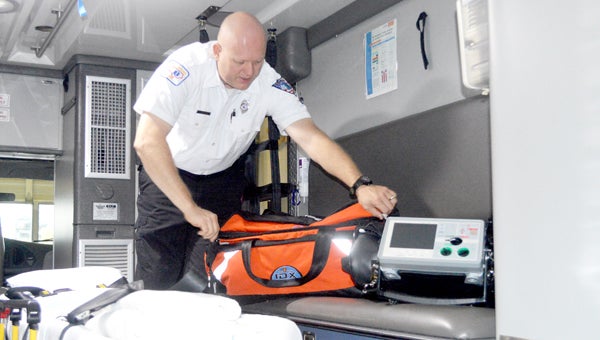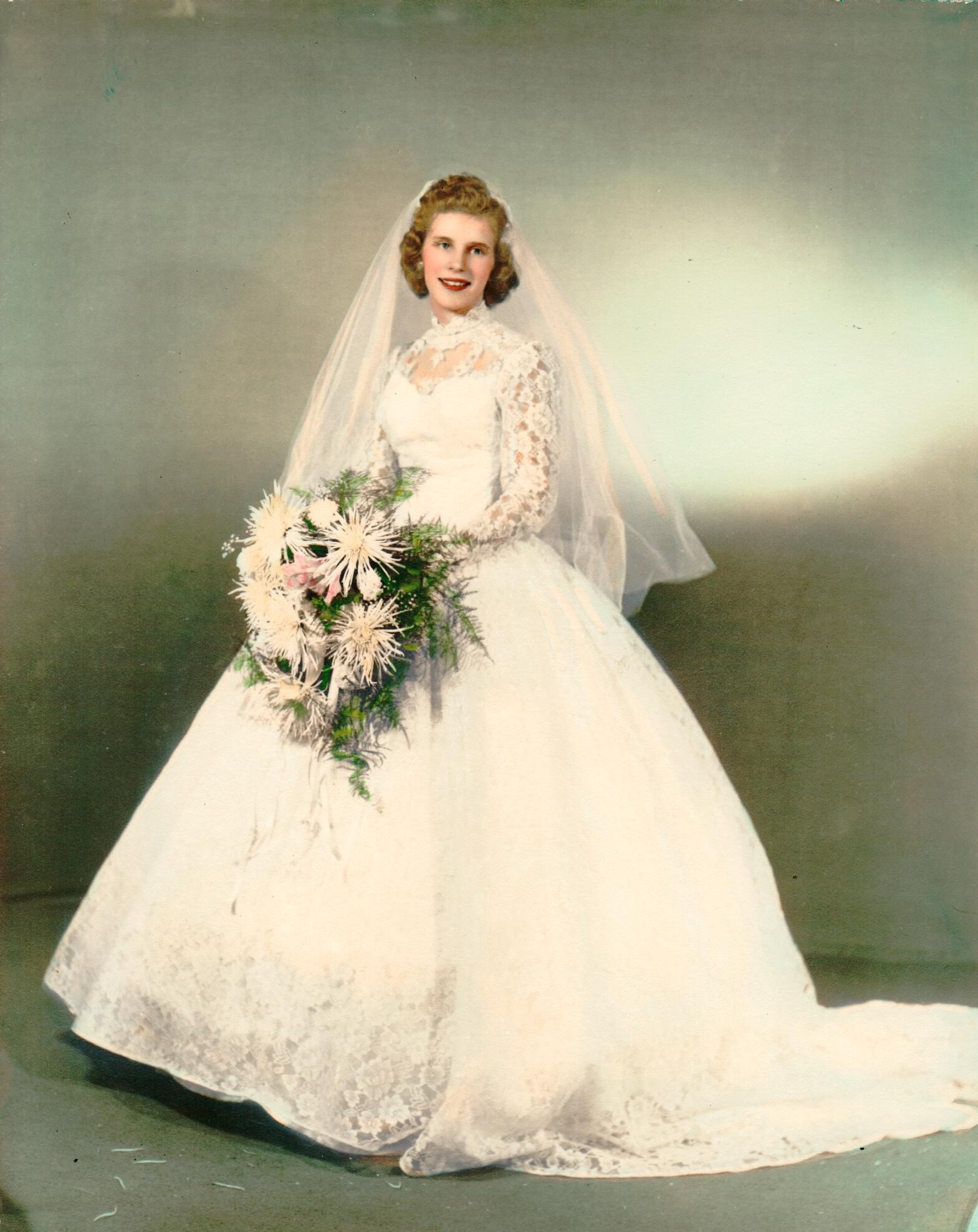Emergency Medical Services provides care with dedication
Published 9:35 pm Thursday, November 28, 2013
by Kiesa Kay
In one 10-minute time period last week, Emergency Medical Services received three calls and a report that a storm with possible flooding was brewing. It was all in a day’s work, and Michael Crater, EMS director, said he knew his well-trained team could respond without complaint. They never know what they will find when they go to answer a call, and they have to be prepared for anything.
“The paramedics assess, test and act immediately on the test results as necessary,” Crater said. “We might have a call about a grandma having trouble breathing, or a son with asthma. It could be someone’s father, unresponsive and no one knows what’s wrong. We respond to calls about asthma, emphysema, falls from ladders, car accidents, you name it.”
Paramedics administer medications, complete diagnostic tests, and stay calm while they provide transportation. They must know how to use many pieces of equipment, including special bandages to staunch bleeding, military tourniquets and neck collars. Most of all, Crater said, they must remain kind and caring as they encounter people in trauma and stress.
“A lot of calls don’t require too many actions, but some calls require a lot,” Crater said. “The paramedic buzzes around the patient the whole time. In a hospital, that patient will have a nurse, doctor, lab technician, CNA and anesthesiologist to help. On the way to the hospital, that person has a paramedic back here, doing all the work.”
The paramedics at EMS have received extensive, specialized training, and they put it to use in many ways. For example, the paramedics sometimes have to intubate people, and help control their breathing.
“You get a choice of two pipes, and if you don’t do it right, well, the stomach doesn’t breathe,” Crater said. “We have equipment to tell us how much exhaled carbon dioxide exists after placing a device, to ensure appropriate placement. And nothing generates air to the lungs as well as a patient’s own heart.”
“Implementing the training we’ve received has meant a lot to me,” Crater said. “We try to make people more prepared to respond to whatever might arise. Our EMS services have highly trained personnel. Our county has volunteers, fire and rescue workers who are really top notch in what they do.”
A response begins with appropriate assessment and builds from there.
“We get the history of what the problem is, how the person feels, and what signs or symptoms they exhibit,” Crater said. “We see if they’re experiencing breathing trouble, and assess possible causes. For example, breathing trouble might be due to heart problems, lung infections, anxiety, blood clots, or numerous other things. We have to assess and treat accordingly.”
Caring combines with competence for Polk County EMS.
“The main strength is our people,” Crater said. “I couldn’t estimate how many people have come in to help here on their off days when they hear of an accident, and employees will offer to work longer hours to help each other. We have a well-motivated group and everyone cares about what they do.”
It takes a special kind of person to be a paramedic, he said.
“People in emergency services who remain in emergency services have an innate ability to keep calm in a crisis and deal with it,” Crater said. “I think of the people who work here as heroes, but they don’t tell you that themselves. They’ll tell you that they’re just doing their jobs. The people who volunteer here on nights and weekends, the plumbers and electricians who take time out of their lives to help others, really deserve recognition, too.”
Crater said he loves the work.
“You have to love it to keep doing it,” Crater said. “You will see some things that are disheartening, tragic and sad in your career, but it’s those things that have great outcomes that make up for it all.”
Penny Storey does insurance billing and collections for the EMS, and she has worked there for 23 years.
“I like the change here,” she said. “Every day is different. Sometimes I go out on the truck, and sometimes I do emergency management. People stay on their jobs here and we’ve got a good group of people. Michael Crater worked as a paramedic on a truck for 17 years, and we are very proud to have him as our director.”
Many people confuse the Emergency Medical Services with the rescue squad, and although both teams respond to medical emergencies, their roles differ. The rescue squad consists of volunteers, and they have ambulances and basic level Emergency Medical Technician (EMT) training. Paramedics have more intensive training.
“It’s like comparing a certified nursing assistant to a registered nurse,” Crater said. “We do some of the same work at times, but paramedics have more intensive training for medical skills. We have standing orders from our doctor, (Lonnie Lassiter), and since we are under one physician, we do not have to call and ask each time we need to start an IV or administer appropriate medications.”
In addition to responding to calls, the paramedics spend time preparing and cleaning equipment, completing paperwork, and billing.
“Medical problems tend to be more common than trauma in our community,” Crater said. “Some days we have nothing but falls and car accidents, and other days we have many cases of pneumonia in nursing homes. You know, once a person catches flu, it can spread like wildfire through our nursing homes.”
County paramedics frequently transport children, because the county does not have a hospital for extremely serious pediatric concerns. A link-based color coded resuscitation tape measures each child to provide calculations and immediate information on the size of equipment and amount of medication to use, and enhances precision for medication administration.
EMS also transfers patients to higher level of care. The majority of their calls come from St. Luke’s Hospital, and they transfer patients to Spartanburg Regional, Pardee, Mission, Rutherford and Greenville in a typical week.
“If we detect heart abnormalities, we will take the person directly to the Spartanburg Heart Center,” Crater said. “We understand the limitations and acceptances of each facility, and we have to have a good idea of what each offers.”

EMS Director Michael Crater ensures an ambulance has all the supplies it needs in place. Crater said its important citizens know how much energy staff and volunteers give to help people in times of emergency. (photo by Kiesa Kay)
Procedures and medications change, so the staff continually updates skills. Continuing education opportunities build on the initial schooling for the EMS staff.
“For example, in doing CPR, the emphasis 10 years ago was on opening the airways, and now the focus is on chest compressions,” Crater said. “When I teach classes, I teach that what kills the person in cardiac arrest is that the heart has stopped working, so we have to get it going.”
Several paramedics teach CPR and advanced classes through the community college system. They also have an annual training for first responders at the office on Hospital Drive.
“Not everybody knows everything, but working together, we can cover it all. It’s often been described as ‘hours of boredom interrupted by moments of terror,’” Crater said.
Crater got his bachelor’s degree in Emergency Medical Services from Western Carolina University, and he first became a supervisor in 1994. As director, he supervises 15 full-time staff and 24 part-time staff.
“We have a lot of EMS veterans here, with 15 or 20 years of experience. We can make more money in bigger cities, like Spartanburg or Asheville, but after we do that for a while, we get tired of it. You know, money isn’t everything. Getting the job done, answering the call, and making sure people get excellent care mean more to me,” he said.
The staff has discussed having a free public CPR class, and they are open to receiving more volunteers. Anyone interested can find Emergency Services on the county website, www.polknc.org.
“We always need volunteers,” Crater said. “It’s a great way to serve the community and a wonderful way to gain more knowledge. We are not here to be thanked, although that’s always nice. Our job is to get there and give help. It’s like with police officers: People don’t call police because they’re having a good day. We see people in need, and we help.”





